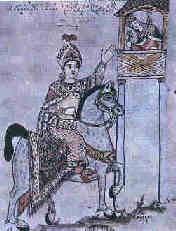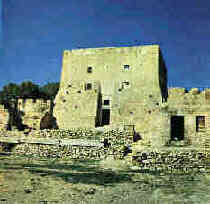History
The name Sitia is derived from the ancient city of Itia, birthplace of one of the seven wise-men of the antiquity, Mison. In the site that the town is built today only few archaeological findings have been excavated. Middle-Minoan and Late-Minoan tombs, Geometrical and Hellenic statues and shells, Roman buildings and an Early-Christian Basilica.
Sitia existed during the Late-Minoan period and until the Venetian period. During the Venetian occupation the town of Sitia was destroyed three times. In 1508 by a terrible earthquake, in 1538 by the pirate Barbarosa and in 1651 by the Venetians so as not to fall in the hands of the Turks.
For two centuries Sitia ceased to exist as a town, until 1869. The present city was built in 1870. Since then, Sitia is developing to one of the most important urban areas in Crete.

Sitia is the birth place of the great poet Vintsenzos Kornaros, that wrote the masterpiece Medieval poem "Erotokritos". The poem narrates the story of the princess Aretousa, daughter of the king of Athens Hercules, and Erotokritos, son of Pezostratos, member of the king's court.
Sights
 Kazarma
Kazarma
The most imposing monument of the past that dominates Sitia is the fortress of the castle today called Kazarma from the "Casa di Arma". Kazarma was one of the buildings of Medieval Sitia, and it served as soldier's barracks and army headquarters. Kazarma and the imposing wall around it were originally built in the Late Byzantine period. The walls were repaired by the Venetians many times and especially after the terrible earthquake of 1508 and the attack by the pirate Barbarosa in 1538.
The Roman fish-tanks
The Roman fish-tanks are placed 150 m from the Customs office. They are semicircular constructions on the shore within which the Romans kept their fish fresh . There are ten fish-tanks in a 200 m coast. Most of them are ruined. The bigger and most well-preserved of them has the shape of a horseshoe and its dimensions are 7*6,75 m.
Tripitos
Tripitos is a small peninsula sited 3 km from Sitia. An artificial shelter for ships dug in the rocks, has been found there and is dated from the Hellenistic period. A Hellenistic city expands to all the peninsula, several part of its settlements have been excavated, as well as its strong wall in the south part of the city. A big number of pots, coins, jewels and lead weights have been excavated. The excavations are still going on today.
Sitia's deposits
The deposits of Sitia are cavities on the ground where the ancient people placed their offerings to the Gods. They are dated from the 1050-500 BC. They were probably placed next to a sanctuary that has not been excavated yet. Several idols, pots and sculptured tiles were found in these deposits, today are exhibited in the Archaeological Museums of Sitia and Agios Nikolaos. This location is considered the most important archaeological finding of Sitia.
| |
 © Interkriti 1996
© Interkriti 1996 